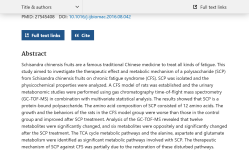Violeta
Senior Member
- Messages
- 3,451
This seems to be helping.
https://pmc.ncbi.nlm.nih.gov/articles/PMC6412213/
Schisandra chinensis is a plant whose fruits have a long-standing use in traditional Chinese medicine. They have been used in the treatment of diseases of the gastrointestinal (GI) tract, respiratory failure, cardiovascular diseases, body fatigue and weakness, excessive sweating, and insomnia [3].
They were also reported to reduce hunger, delay aging, increase vitality, and improve mental health [4].
They demonstrate neuro and hepato-protective, anti-inflammatory, antioxidative, detoxification, immunostimulant, antiviral, and anti-cancer activities, as well as cardiovascular and skin-protective properties [5,6,7,8].
Reviews of the pro-health effects of SCE focus primarily on their influence on the central nervous, sympathetic, cardiovascular, endocrine, and respiratory systems, as well as its adaptogenic, hepatoprotective, immunostimulant, antioxidant, ergogenic, and anti-stress activities [3,4,9,10,11].
This review provides updated information on the phytochemical composition of SCE and the mechanisms underlying its beneficial activity in humans, including its anti-cancer, antimicrobial, anti-diabetic, anti-obesity, and anti-aging actions.
https://pmc.ncbi.nlm.nih.gov/articles/PMC6412213/
Schisandra chinensis is a plant whose fruits have a long-standing use in traditional Chinese medicine. They have been used in the treatment of diseases of the gastrointestinal (GI) tract, respiratory failure, cardiovascular diseases, body fatigue and weakness, excessive sweating, and insomnia [3].
They were also reported to reduce hunger, delay aging, increase vitality, and improve mental health [4].
They demonstrate neuro and hepato-protective, anti-inflammatory, antioxidative, detoxification, immunostimulant, antiviral, and anti-cancer activities, as well as cardiovascular and skin-protective properties [5,6,7,8].
Reviews of the pro-health effects of SCE focus primarily on their influence on the central nervous, sympathetic, cardiovascular, endocrine, and respiratory systems, as well as its adaptogenic, hepatoprotective, immunostimulant, antioxidant, ergogenic, and anti-stress activities [3,4,9,10,11].
This review provides updated information on the phytochemical composition of SCE and the mechanisms underlying its beneficial activity in humans, including its anti-cancer, antimicrobial, anti-diabetic, anti-obesity, and anti-aging actions.

